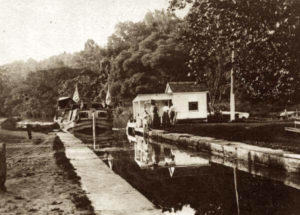But They Kept The Humans Around

McCoy Fields: part man, part machine, still two left thumbs in the garden.
I used to think “AI” stood for “Absolutely Ineffective,” back when it meant autocorrect changing “yard ramp” to “yard lamp” in emails. (Though to be fair, who wouldn’t want a 20,000-lb steel lamp on their loading dock?)
But now? Things have changed.
Jeff Mann, The Real Yard Ramp Guy, in his endless pursuit of helping people move heavy things efficiently, recently told me that he's decided to team up with the bots. Yep: artificial intelligence, machine learning, smart algorithms… whatever you want to call it, he's using it to make your life easier.
Not Replacing People. Enhancing Service.
We’re not talking about robo-salesmen barking out ramp specs in a monotone. Over the next months, The Yard Ramp Guy will be adding:
- Smarter search tools that help you find ramps faster.
- Intelligent suggestions for ramp rentals in your region (like Wheeling, West Virginia, my personal favorite place) —or anywhere your business happens to park itself).
- Better customer response times, even outside office hours.
It’s not some cold, robotic takeover. It’s human + machine, working together to get you the right ramp, in the right place, at the right time. That’s pretty darn cool.
Still Human. Still Helpful.
Jeff Mann assures me that The Yard Ramp Guy hasn’t lost his personal touch. You’ll still talk to real people who actually know what a yard ramp is and how to spell it. The AI just clears the path a little faster.
Think of it like this: AI is the forklift, and the humans are still doing the steering.
The Bottom Line
Technology is only as good as the hands it’s in. And lucky for us, it’s in The Yard Ramp Guy’s hands: steady, experienced, and always pointed toward helping folks get the job done.
So if you see a few smart tools on the website, don’t be alarmed. It’s not the rise of the machines. It’s the rise of better service.
The Yard Ramp Guy | Renting an Industrial Yard Ramp: Key Benefits
This week, my friend The Yard Ramp Guy gives me an advanced primer on the benefits of renting a portable yard ramp from that fine company.
Click HERE to read a description that'll make you want to click and call The Guy.





